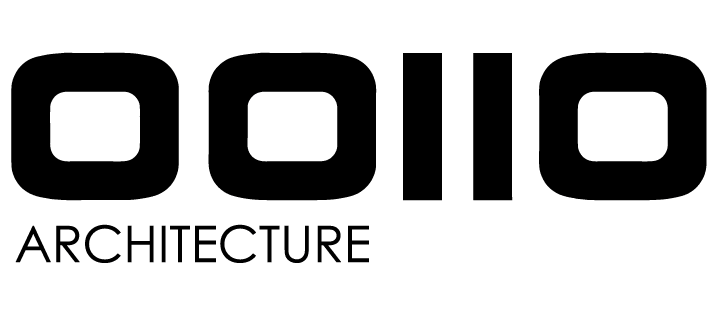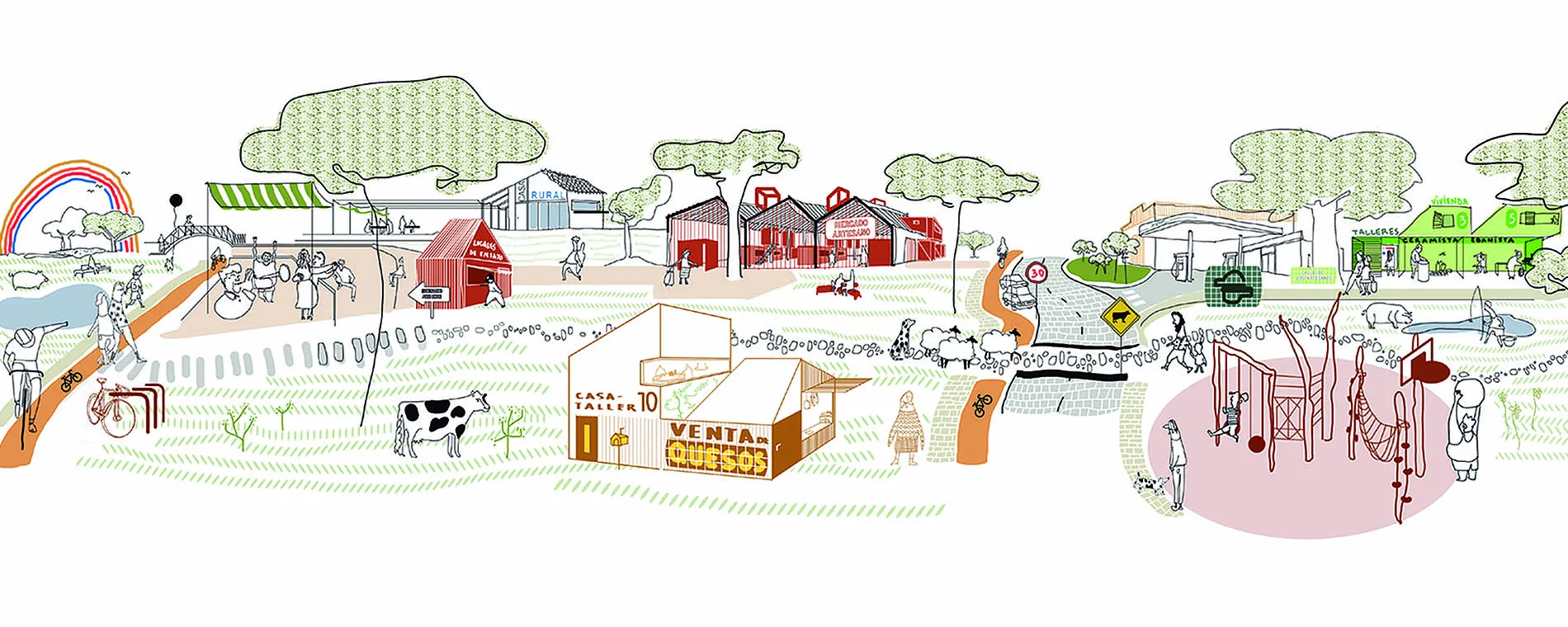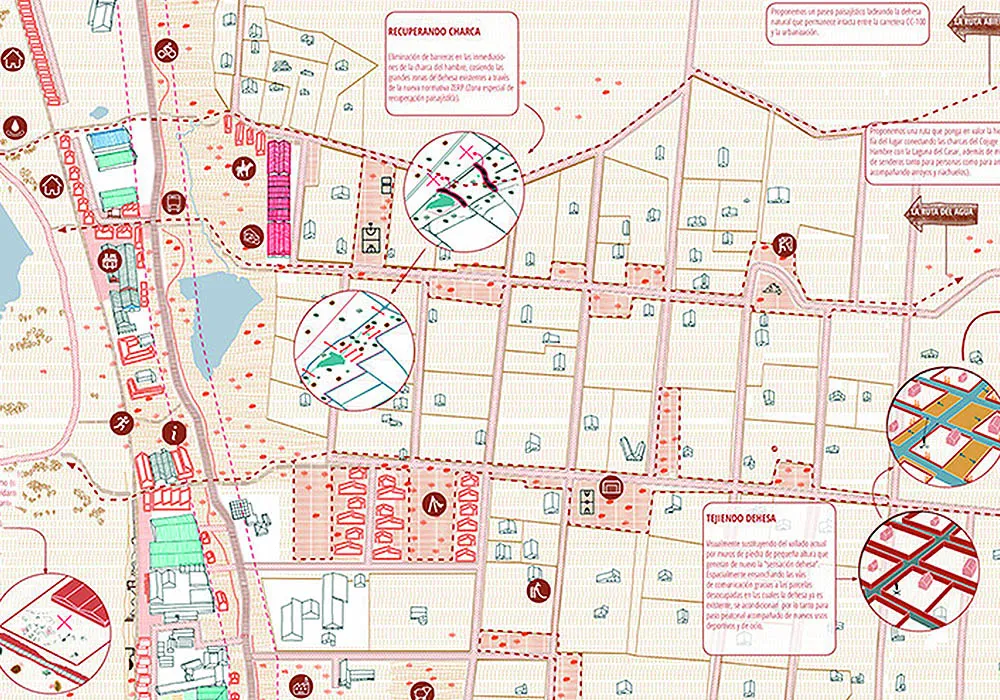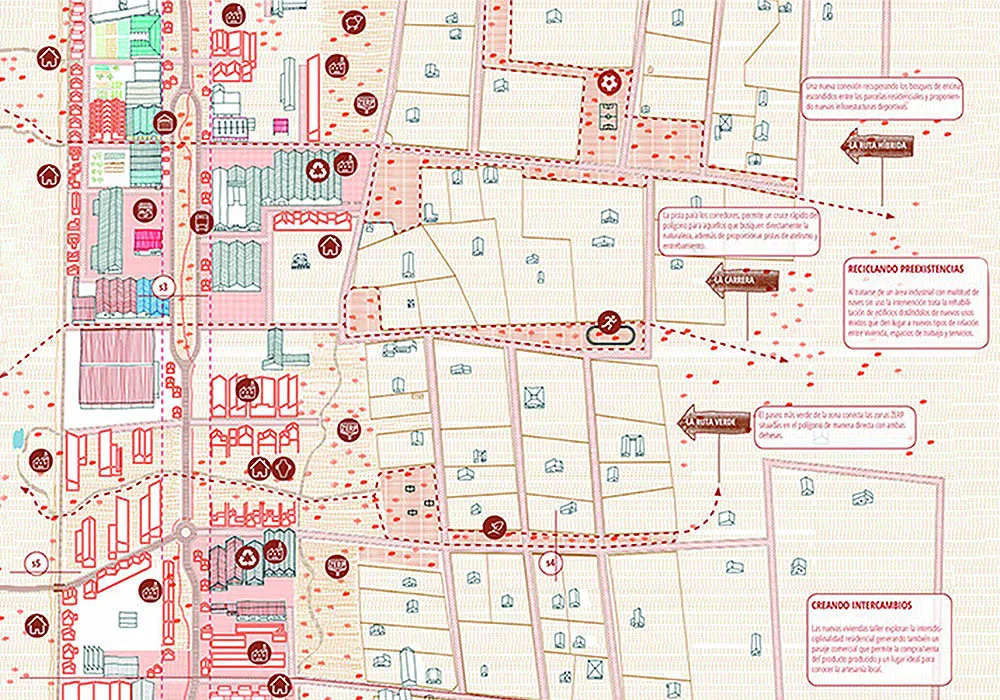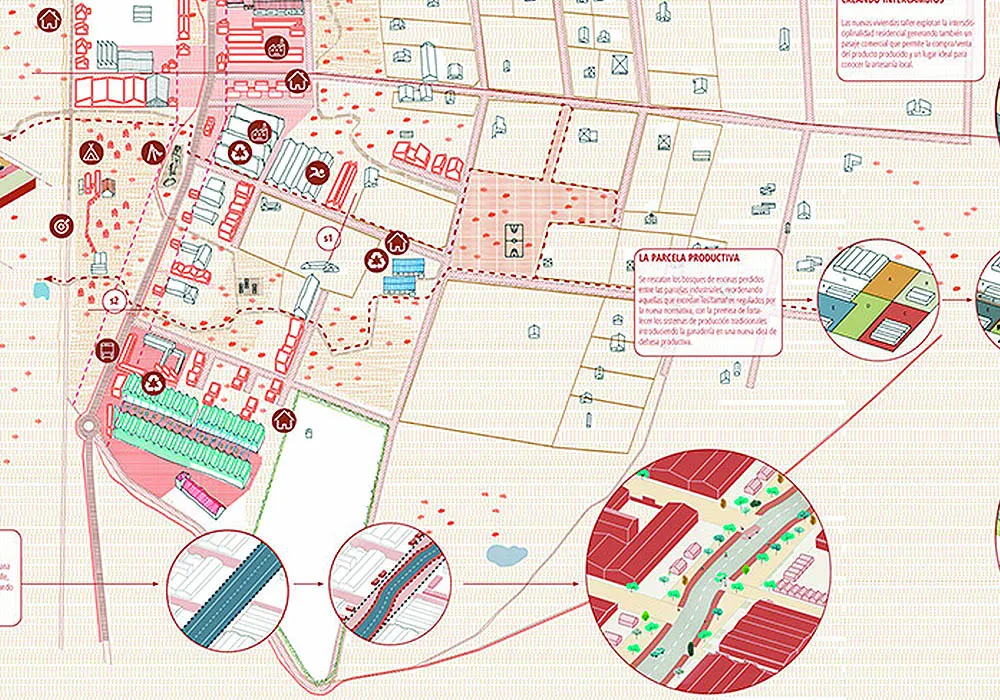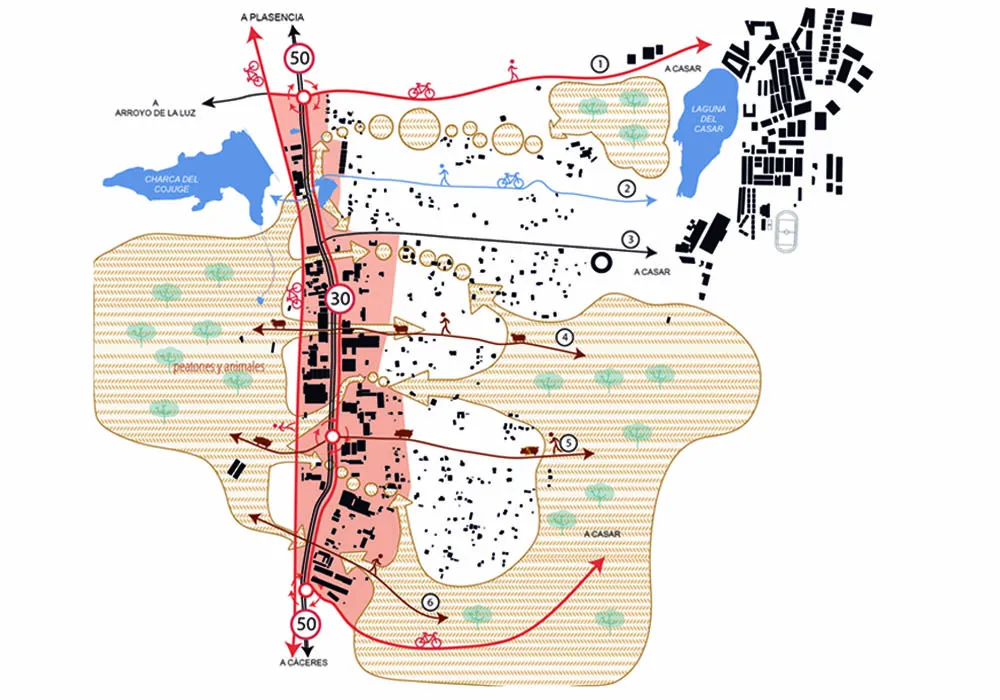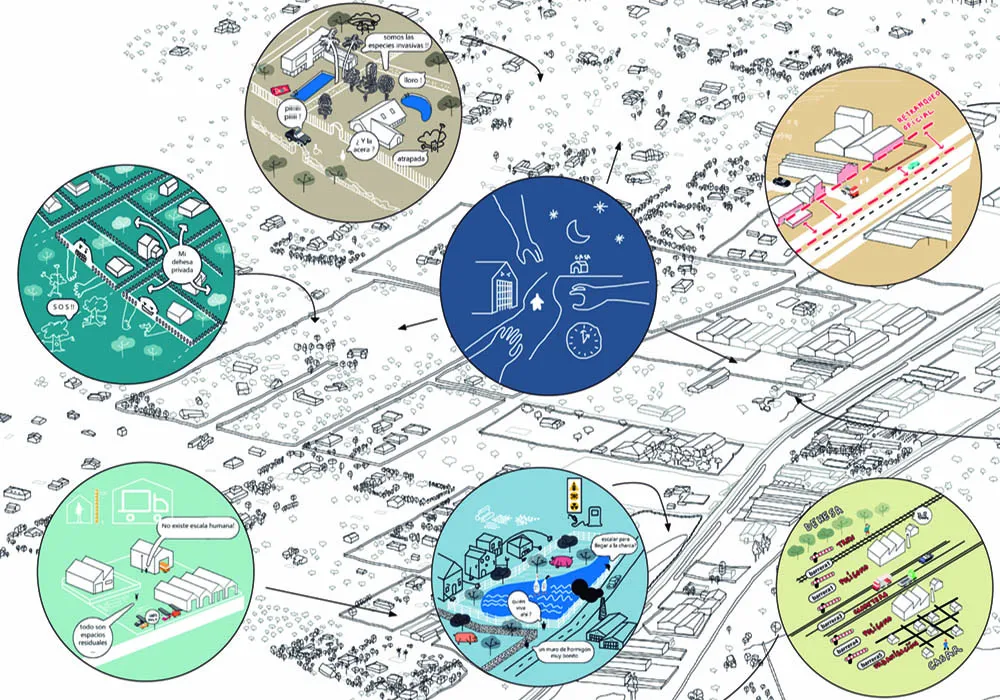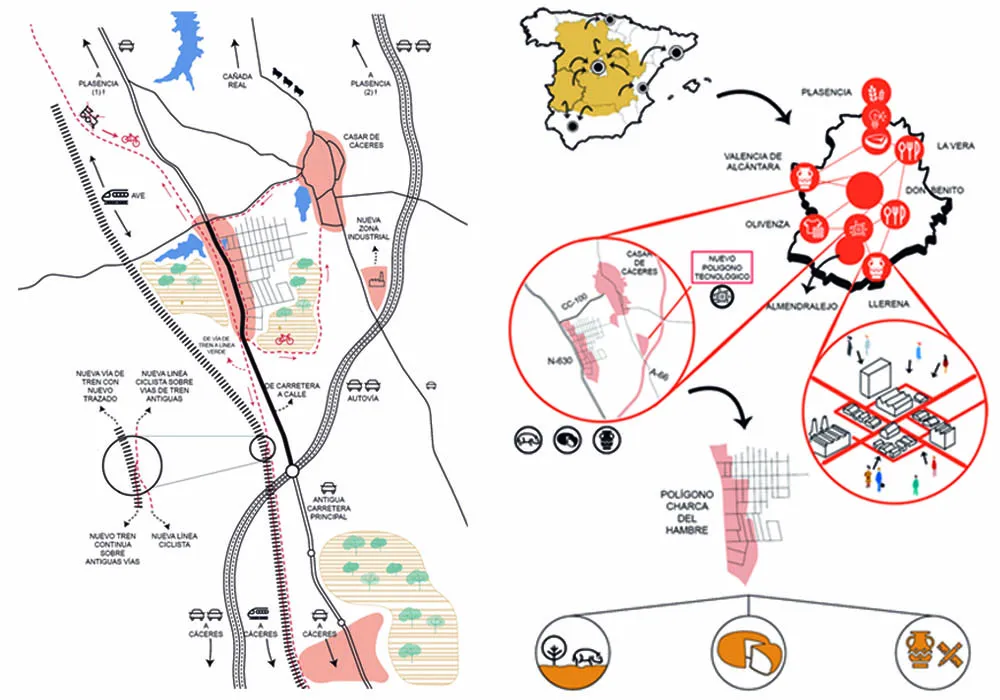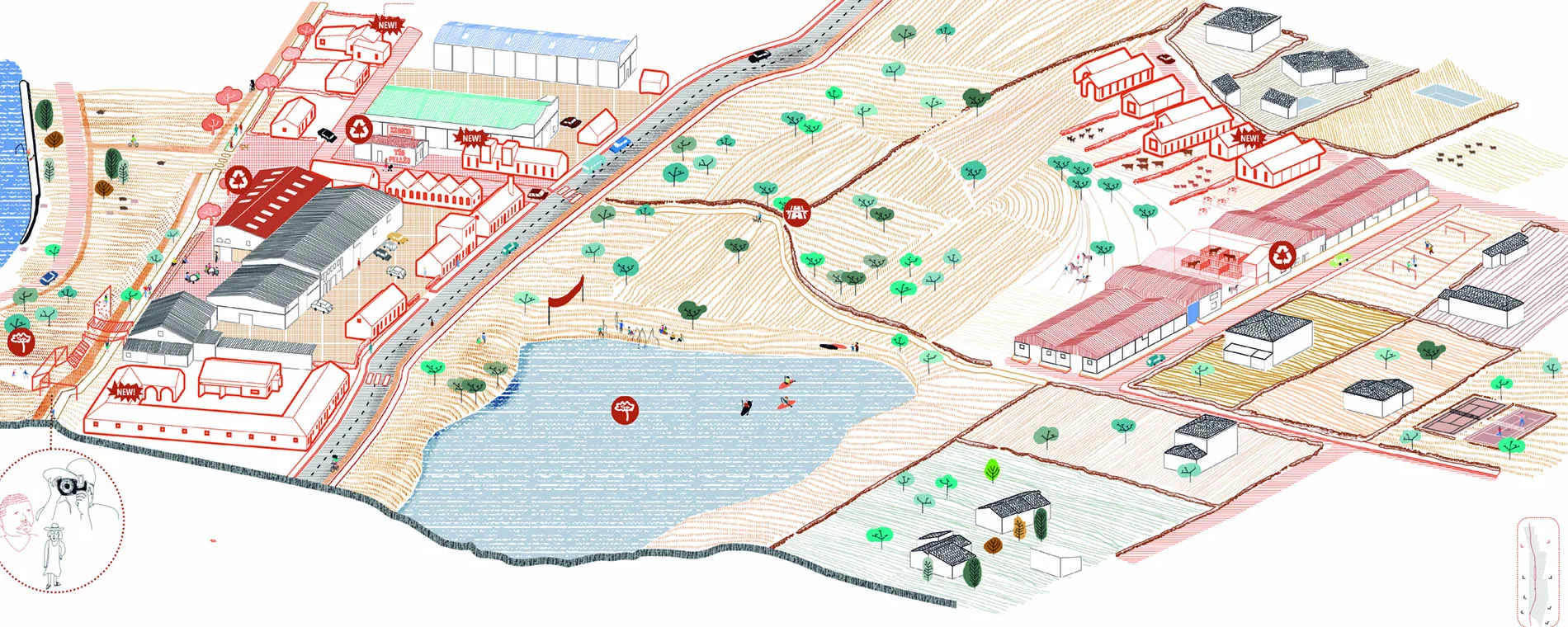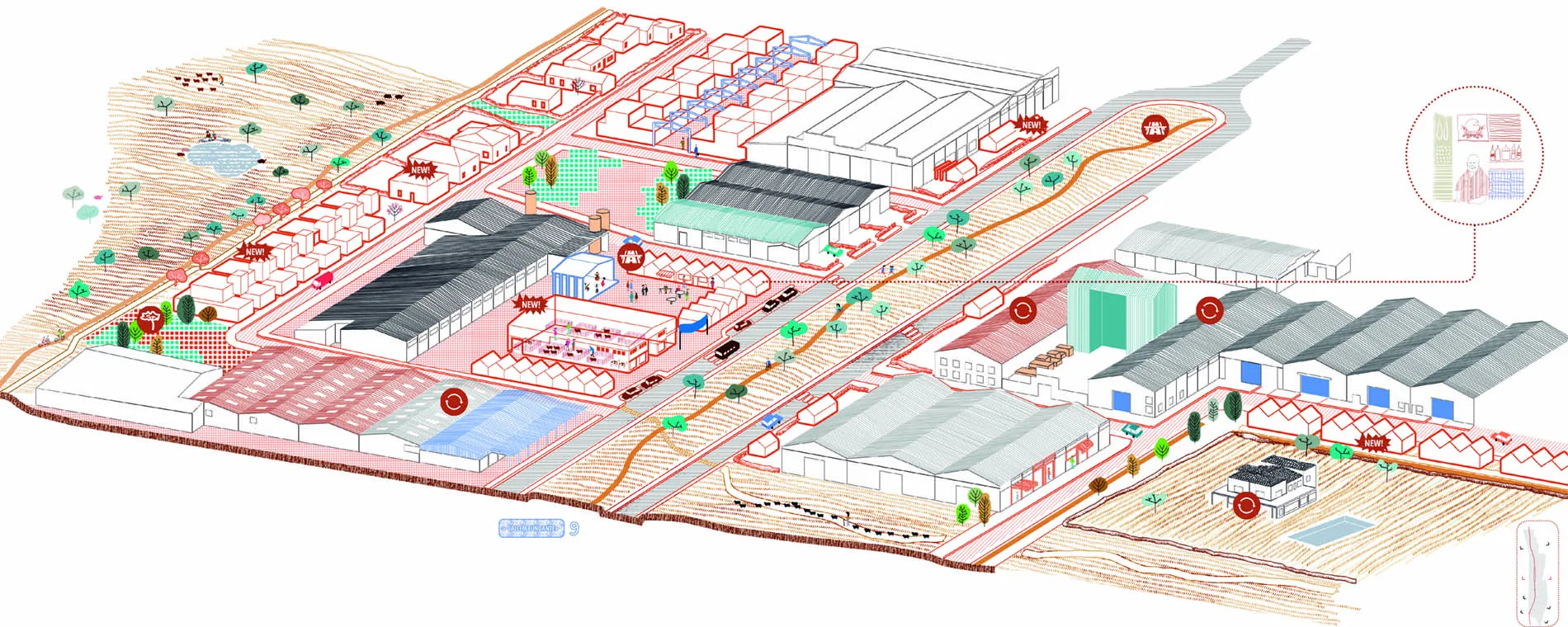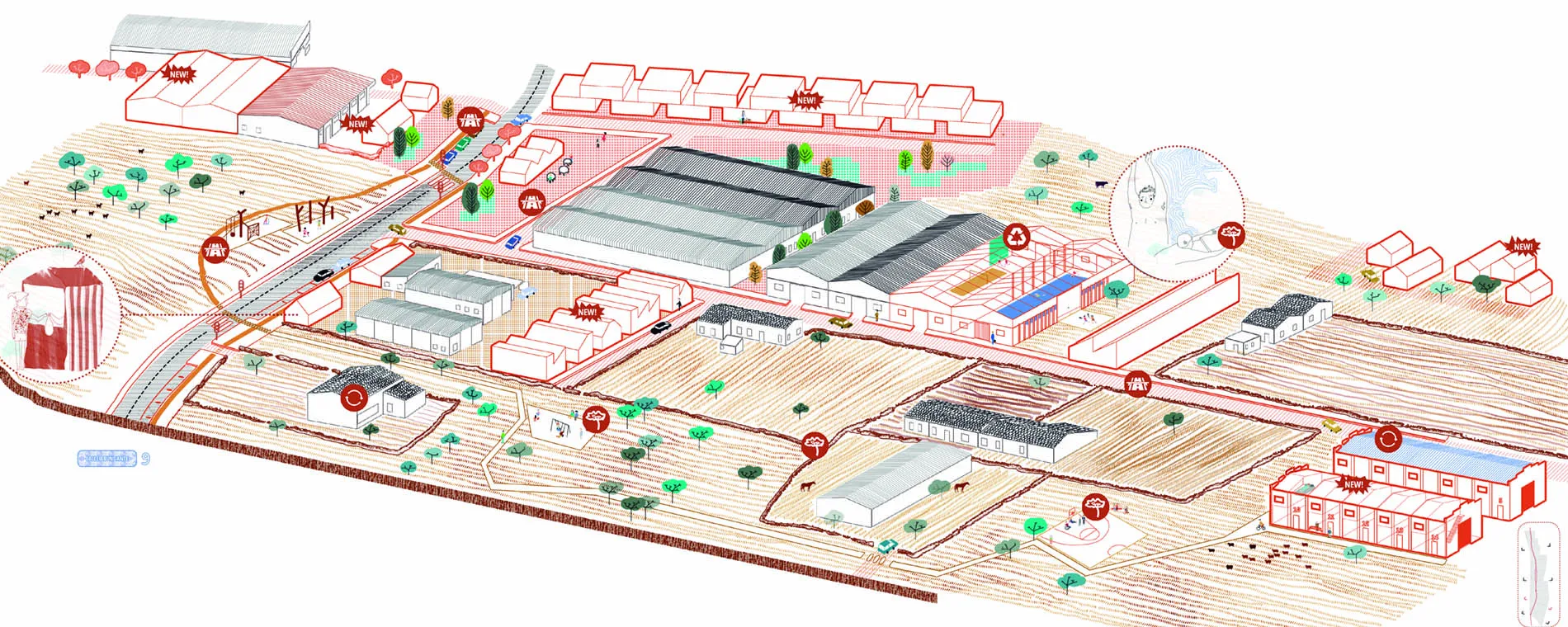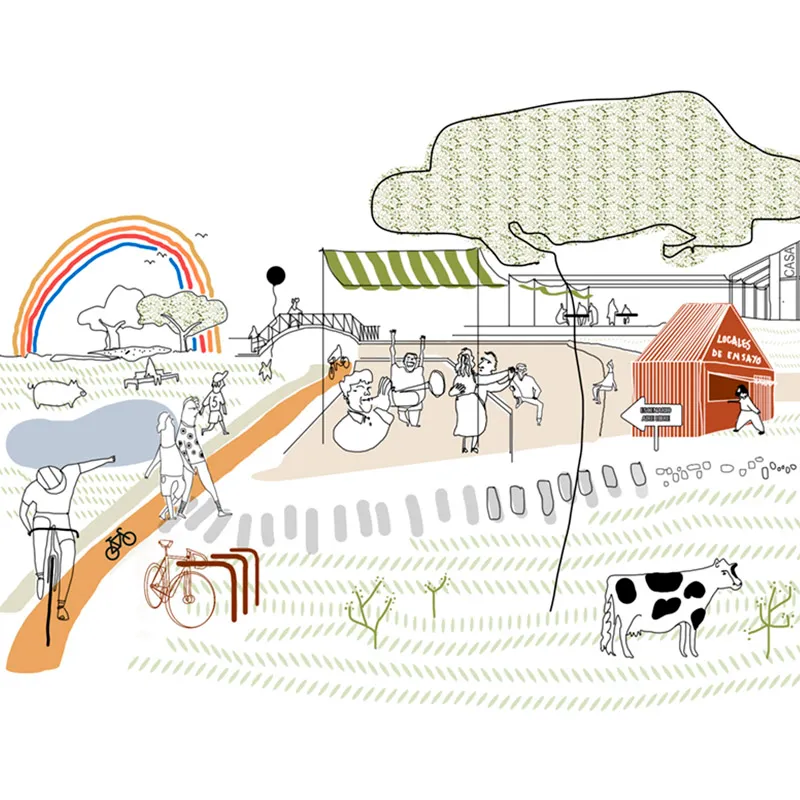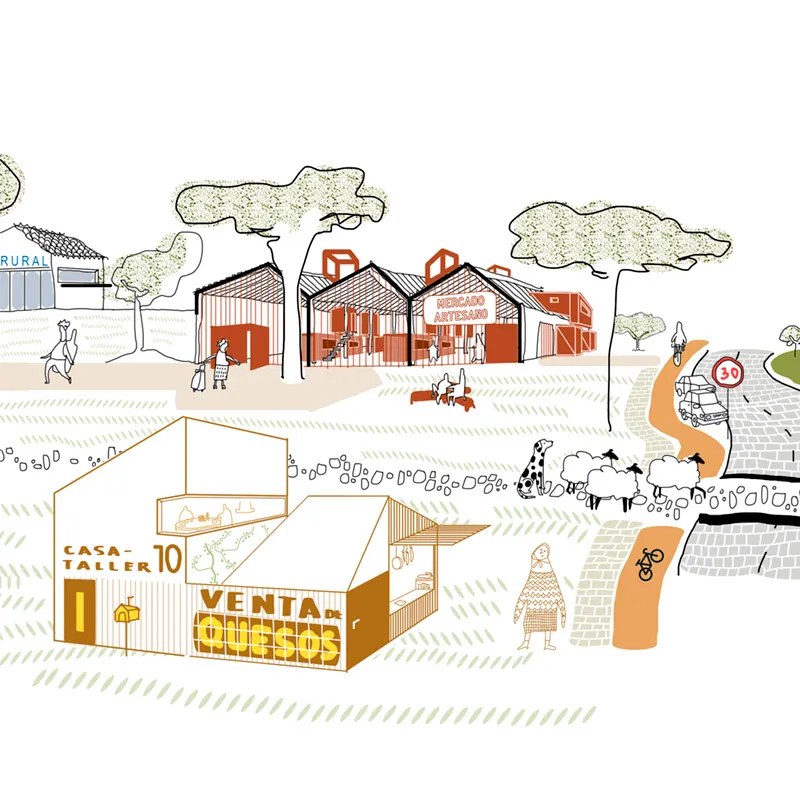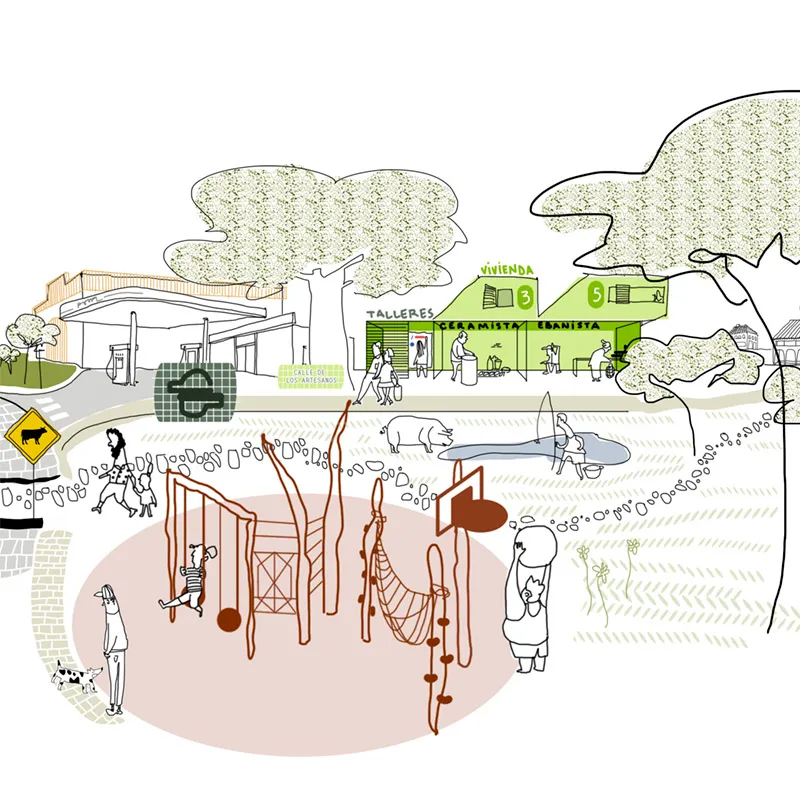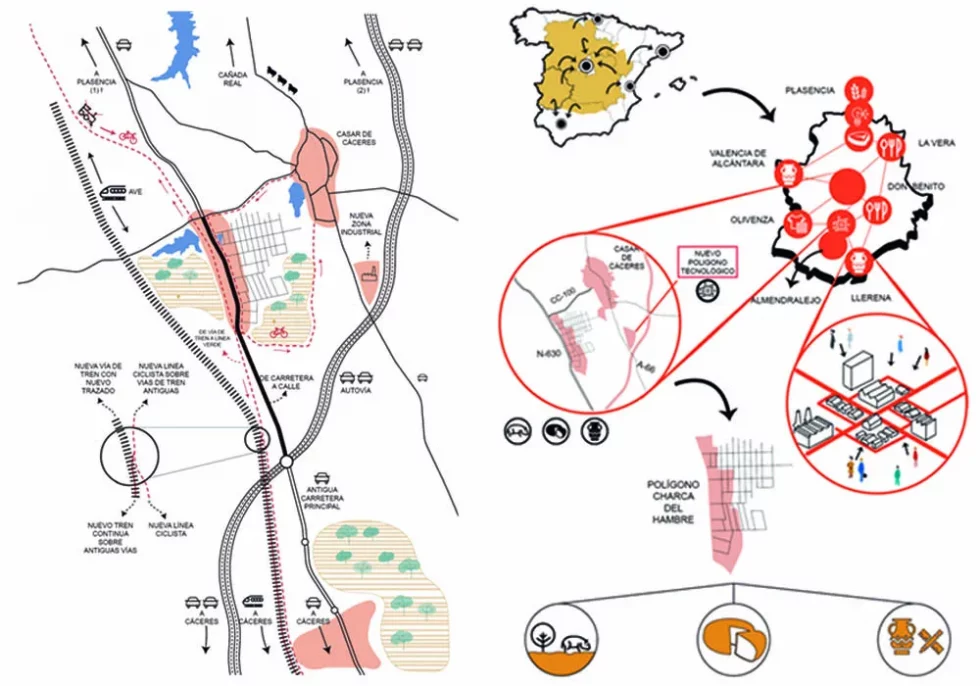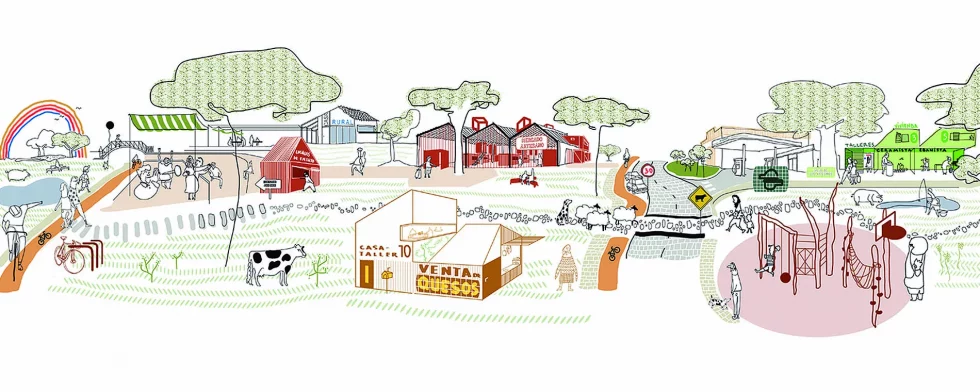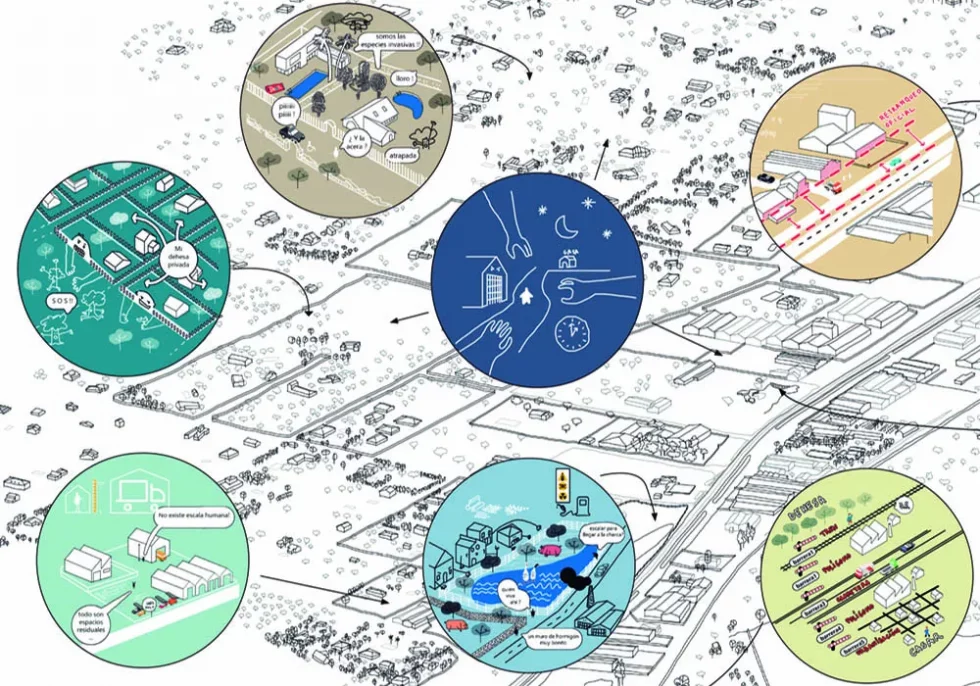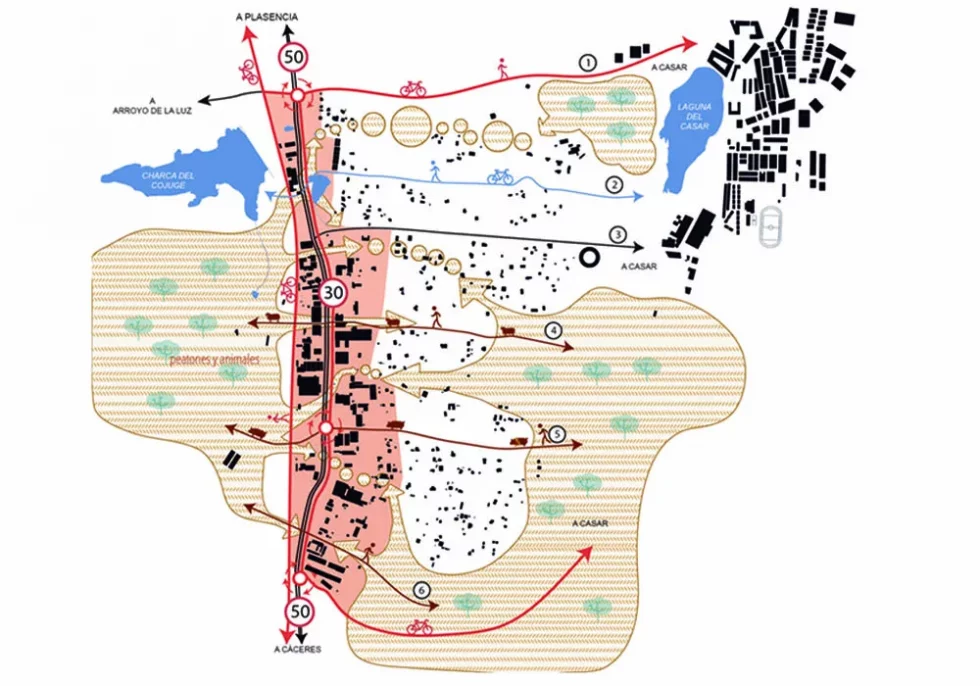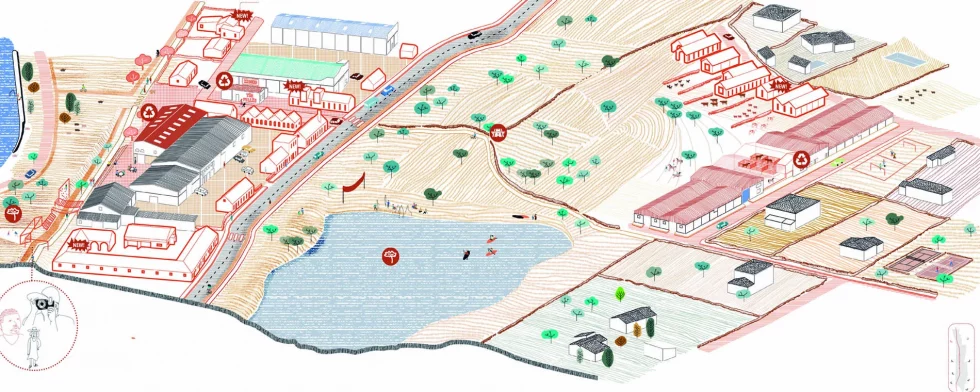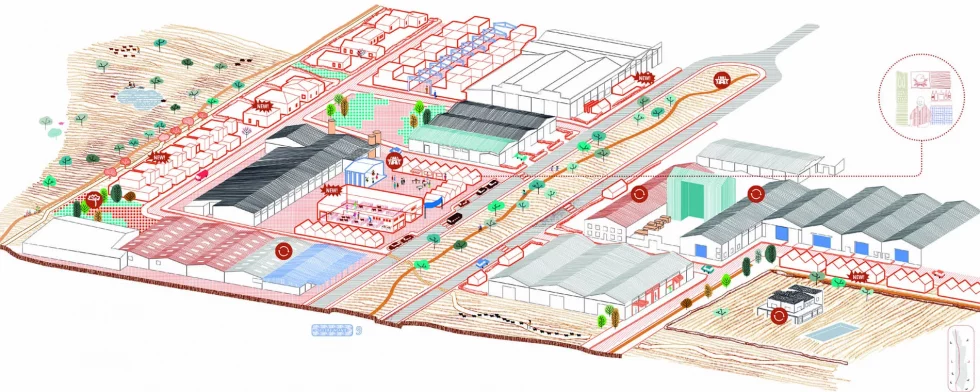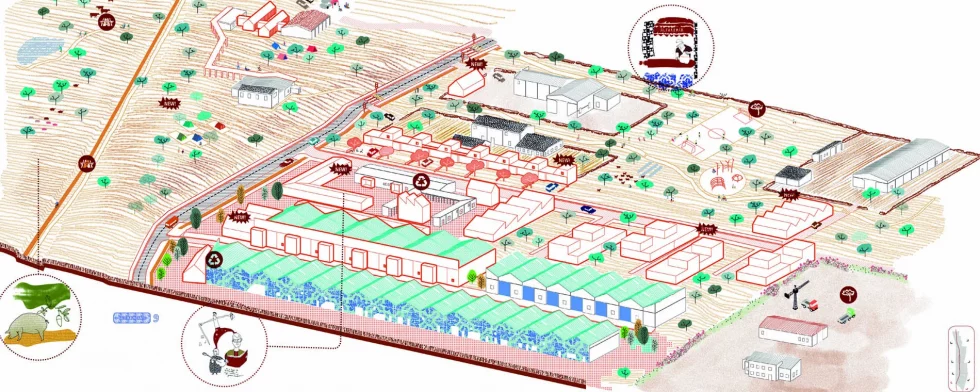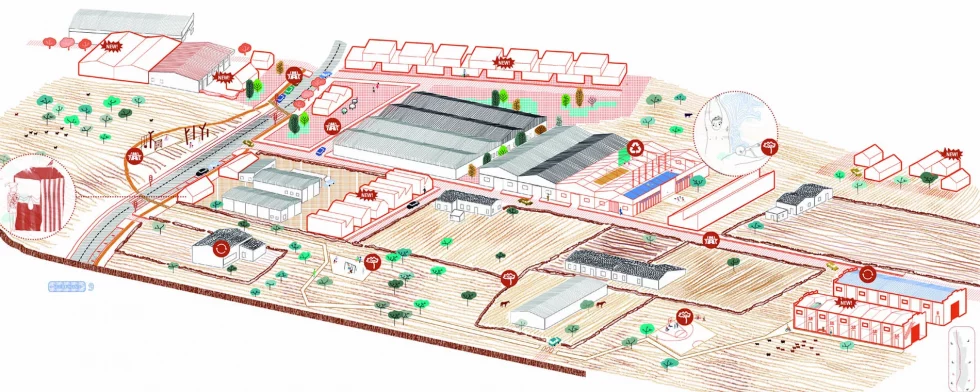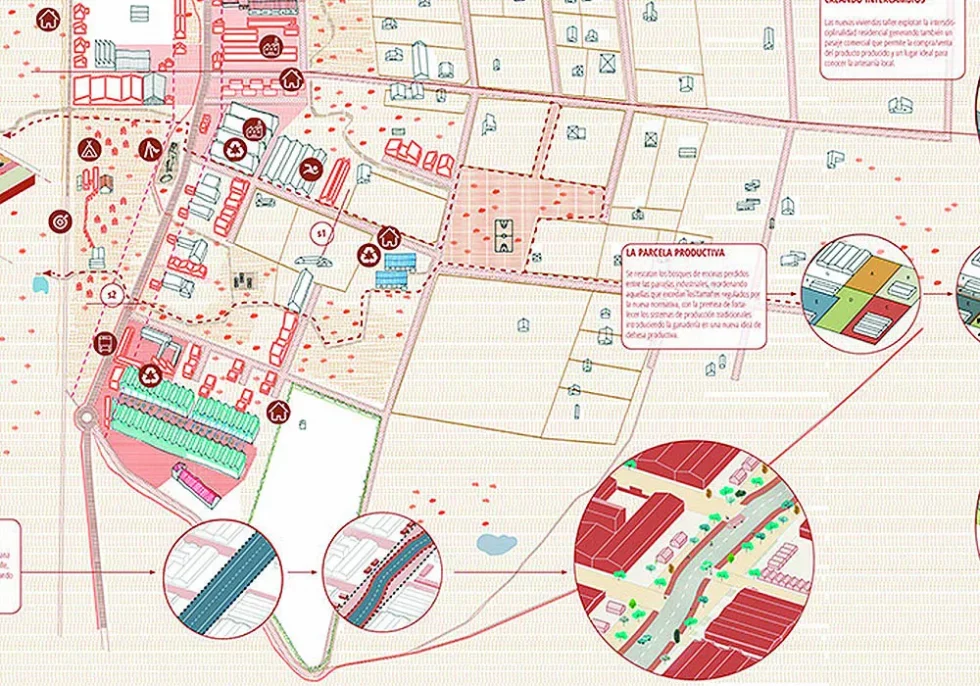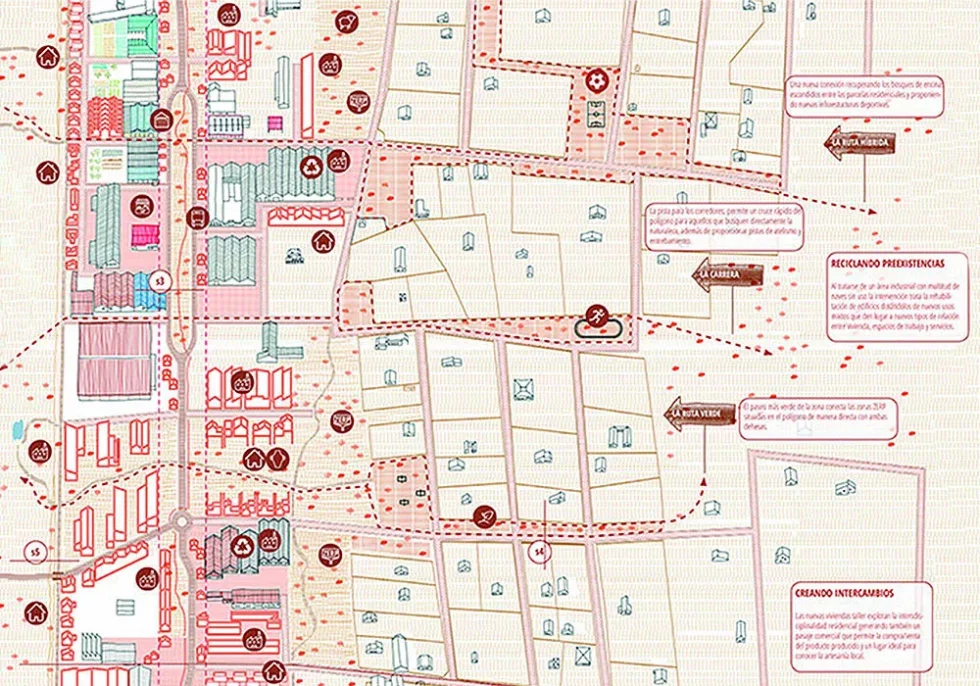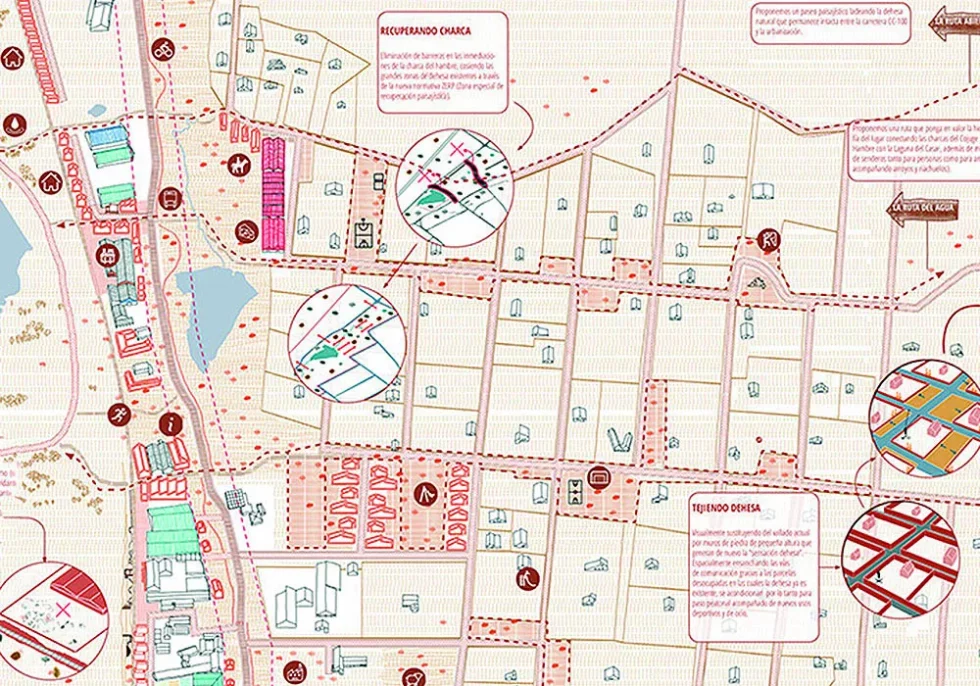It seems incredible that the neighbours of the area cannot be seen enjoying the beautiful places they have just a few minutes from their homes. That is because over the years it has acted without any respect for the main value of the site, its landscape.
Infrastructures such as the N-630 and the train tracks cut the environment as great barriers. The industrial estate is shown as a messy ghetto, little dense, without any appeal that degrades everything that is close to it. The Monte del Casar urbanization has partially privatized the pasture, creating legal land ownership conflicts, filling the site with barriers, thus ending its visual quality and natural landscape. The “Hunger Pond” itself that gives its name to the Polygon is very pressured by human action, in the middle of a very degraded semi-industrial natural environment.
We propose a project made by the sum of many projects, based on dialogue and participation, organized in phases that will be self-correcting over time and experience.
The main objective of all actions will be that the landscape becomes the protagonist of the environment again. We understand as landscape not only the natural values of a place, but also the cultural, economic, social, etc. We want to build a landscape adapted to a wide variety of contemporary and future uses and forms of production.
A pasture is itself a productive landscape. We want the Dehesa to be the economic engine of the place again. A contemporary, productive pasture thanks to new ways of working together with her.
The industrial area will now be an opportunity for the landscape and for the entire region. We will create a hybrid environment for innovation, in which elements that previously turned their backs on each other, now work together in a symbiotic way.
